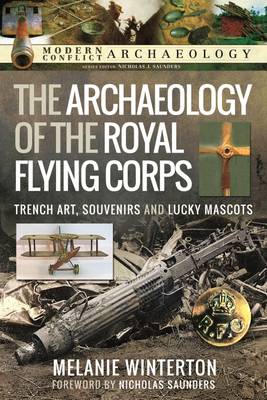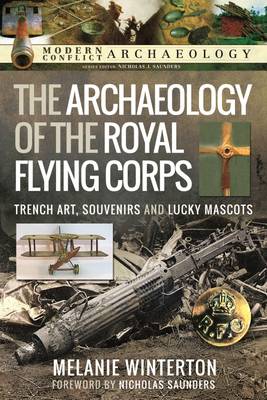
- Retrait gratuit dans votre magasin Club
- 7.000.000 titres dans notre catalogue
- Payer en toute sécurité
- Toujours un magasin près de chez vous
- Retrait gratuit dans votre magasin Club
- 7.000.0000 titres dans notre catalogue
- Payer en toute sécurité
- Toujours un magasin près de chez vous
55,45 €
+ 110 points
Description
"Winterton's book is a good introductory effort on the haptic environment of World War I aviators and their personal artifacts."--The Journal of the Air Force Historical Foundation
Archaeology provides a fascinating insight into the lives of the aviators of the First World War. Their descriptions of the sensation of flying in the open cockpits of the primitive warplanes of the day, and the artifacts that have survived from these first years of aerial combat, give us a powerful sense of what their wartime service was like and chart the beginning of our modern understanding of aviation. But the subject hasn't been explored in any depth before, which is why Melanie Winterton's pioneering book is so timely. Hers is the first study of the trench art, souvenirs and lucky mascots associated with the Royal Flying Corps which, in an original way, tell us so much about the experience of flying on the Western Front a century ago.
Extensive quotations from the memoirs of these early airmen are combined with an analysis of the artifacts themselves. They convey something of the fear and anxiety the airmen had to grapple with on a daily basis and bring out the full significance of the poignant souvenirs they left behind. Pieces of crashed airplane - wooden propellers, strips of linen, fragments of metal - were recycled and circulated during the war and afterwards became the focus of attention in the domestic home. As Melanie Winterton demonstrates, these items connected the living with the deceased, which is why they are so strongly evocative even today.
Archaeology provides a fascinating insight into the lives of the aviators of the First World War. Their descriptions of the sensation of flying in the open cockpits of the primitive warplanes of the day, and the artifacts that have survived from these first years of aerial combat, give us a powerful sense of what their wartime service was like and chart the beginning of our modern understanding of aviation. But the subject hasn't been explored in any depth before, which is why Melanie Winterton's pioneering book is so timely. Hers is the first study of the trench art, souvenirs and lucky mascots associated with the Royal Flying Corps which, in an original way, tell us so much about the experience of flying on the Western Front a century ago.
Extensive quotations from the memoirs of these early airmen are combined with an analysis of the artifacts themselves. They convey something of the fear and anxiety the airmen had to grapple with on a daily basis and bring out the full significance of the poignant souvenirs they left behind. Pieces of crashed airplane - wooden propellers, strips of linen, fragments of metal - were recycled and circulated during the war and afterwards became the focus of attention in the domestic home. As Melanie Winterton demonstrates, these items connected the living with the deceased, which is why they are so strongly evocative even today.
Spécifications
Parties prenantes
- Auteur(s) :
- Editeur:
Contenu
- Nombre de pages :
- 176
- Langue:
- Anglais
- Collection :
Caractéristiques
- EAN:
- 9781399097260
- Date de parution :
- 07-10-22
- Format:
- Livre relié
- Format numérique:
- Genaaid
- Dimensions :
- 164 mm x 240 mm
- Poids :
- 566 g

Les avis
Nous publions uniquement les avis qui respectent les conditions requises. Consultez nos conditions pour les avis.






